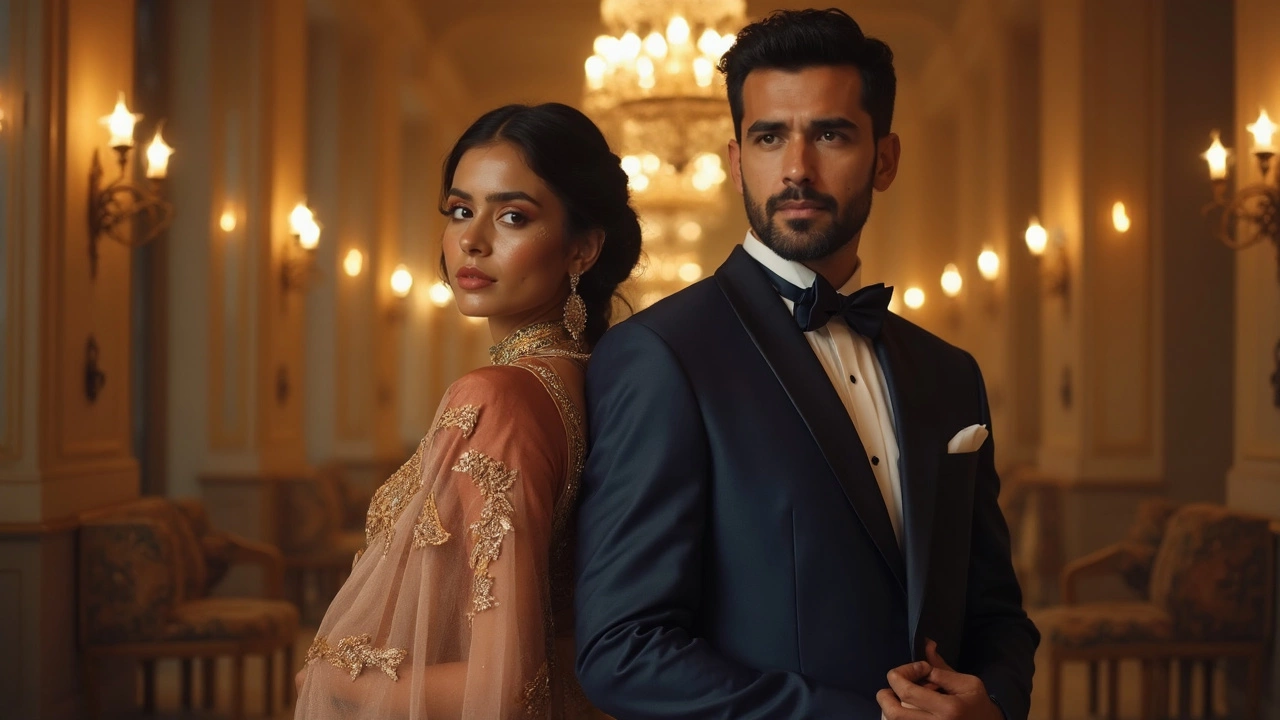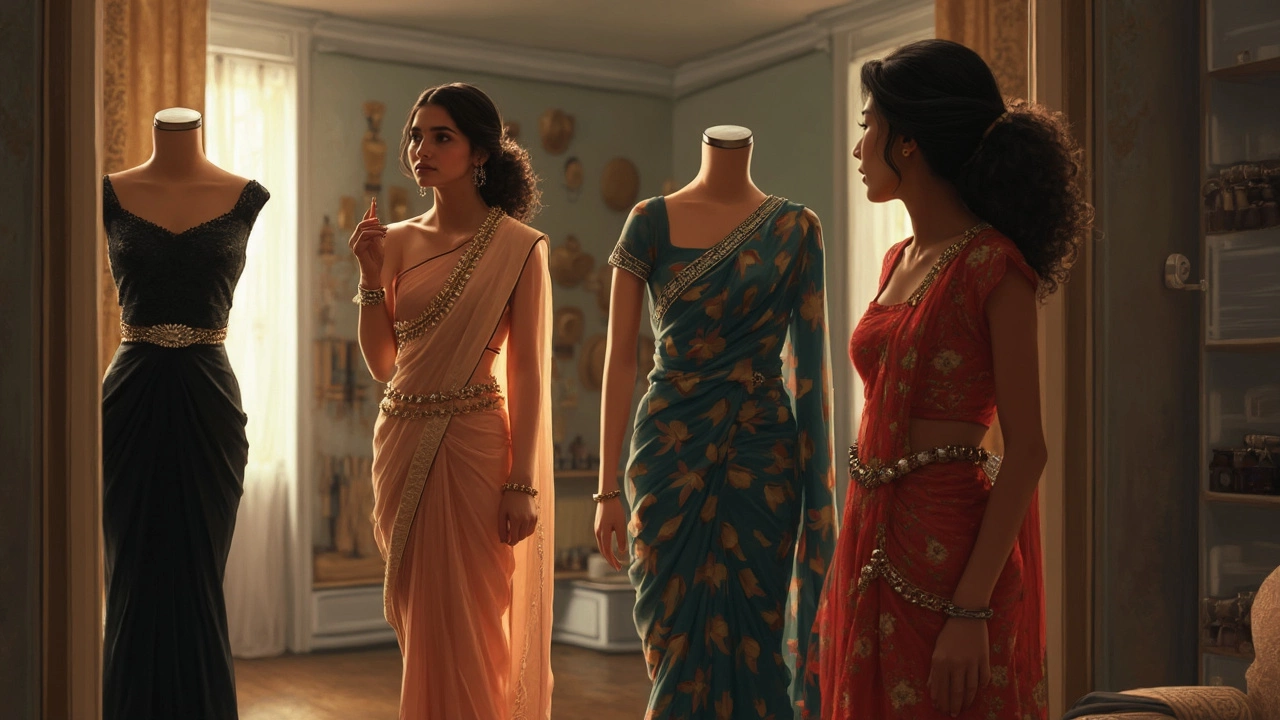Smart Evening Wear: What It Really Means for Evening Dresses

Ever get an invitation that says "smart evening wear" and immediately wonder what that actually means? You're not alone. It’s one of those dress codes that sounds straightforward, yet still trips up even the most fashion-savvy people.
Let’s get to the point: smart evening wear isn’t just about showing up in any pretty dress. It’s about finding that sweet spot between classic elegance and looking put together—without going so formal you feel like you’re in a ball gown. Think less prom queen, more red carpet at a modern gala.
If you pick the right dress, you’ll look polished, right for the occasion, and feel comfortable all evening. But mess it up, and you might feel out of place or even underdressed. Here’s what matters when it comes to picking your next evening look—and how to avoid easy mistakes.
- Defining Smart Evening Wear
- What Makes a Dress 'Smart'?
- How to Choose for Different Occasions
- Accessories and Styling Hacks
- Big Mistakes to Avoid
Defining Smart Evening Wear
The term smart evening wear is more specific than just “dressing up for the night.” It’s a dress code that sits between business casual and full-on formal wear, popping up at upscale events, cocktail parties, charity dinners, and weddings. For most people, this means finding an outfit that's fancier than what you’d wear to dinner with friends, but not as glitzy or stuffy as a black-tie ball.
Smart evening wear always comes down to looking sharp, feeling confident, and being event-appropriate. For women, that usually means a stylish cocktail dress, subtle jumpsuit, or a knee- to floor-length dress. You're aiming for something elegant, nothing too flashy or over-the-top. Men have it a bit easier: a well-fitted suit, dress shirt, and smart shoes usually do the trick.
If you’re not sure how “smart” it needs to be, check the invite for clues. Venues make a difference—what works at a rooftop bar probably isn’t right for a hotel ballroom. And remember, smart evening wear is about presence, not price. A well-tailored $80 dress can outshine an expensive one that doesn’t fit or feels awkward.
Quick check: Here’s what typically counts as smart evening wear for different types of events.
| Event Type | Typical Smart Evening Wear |
|---|---|
| Cocktail Party | Knee or midi-length dress, subtle heels, small clutch |
| Wedding (Evening) | Dressy jumpsuit or elegant dress, modest jewelry |
| Charity Dinner | Floor-length dress optional, classic makeup, styled hair |
| Work Gala | Polished suit, tailored sheath dress, maybe light statement accessories |
Key takeaway: Smart evening wear is never boring or lazy. Skip hoodies and sneakers even if they’re trending. Instead, go for clean lines, neat finishes, and pieces you won’t mind being photographed in. When in doubt, stay classic and add one small, personal twist to make your look yours.
What Makes a Dress 'Smart'?
When people talk about smart evening wear, they’re really focusing on a mix of sophistication and good taste. It’s about looking sharp, not just throwing on something fancy. Let’s break down what makes a dress actually count as ‘smart’ for the evening.
First off, the fabric is key. Dresses made from materials like silk, satin, chiffon, or velvet almost instantly look smarter because they catch the light and feel luxe. You don’t have to spend a fortune, but steer clear of anything too casual—cotton sundresses or jersey fabrics won’t cut it here.
Next up is the cut and fit. A smart dress skims your body without being too tight or too baggy. Think about midi or floor-length hems instead of mini dresses. Necklines like boat, V-neck, or off-shoulder feel more dressed up, while spaghetti straps or super plunging cuts can look less polished depending on the event.
Color matters too. Usually, darker shades (like navy, deep green, burgundy, or classic black) give a smart vibe. Prints are fine, but go for subtle patterns over anything too loud or busy. If you want to try something bright, keep the shape and styling simple so you don’t go over the top.
- Pay attention to the detailing. Neat seams, simple embellishments, or a hint of sparkle (think a small brooch or waist detail) level up your look, while huge sequins or lots of ruffles can make it look more like a costume party.
- Keep in mind the length and structure. A-line, sheath, or wrap dresses usually nail that “smart” look fast, especially if they’re tailored well.
Check the back and sides of your dress, too. Make sure there are no see-through bits or awkward cutouts that could leave you feeling exposed. Comfort counts—if you can’t sit, move, or walk easily, it’s not smart no matter how good it looks hanging up.
One last tip: always try your outfit on in daylight before your event. Sometimes something that looks nice at home can feel way less smart in a brighter or different setting. If you’re ever in doubt, think simple, solid, and well-fitted. That’s what ends up looking the smartest in the real world.

How to Choose for Different Occasions
The rules for smart evening wear change based on where you’re going—and honestly, that’s half the stress. Not all events call for the same look, and it’s easy to overdress or underdress if you don’t know what’s expected.
Here’s a quick cheat sheet for common occasions so you can play it safe and still stand out for the right reasons:
- Weddings: Unless it’s black tie, you’re aiming for a classy dress that doesn’t try to steal the bridal thunder. Mid-length or long dresses work best, steer clear of pure white, and add a fitted blazer if it feels chilly. Some modern weddings allow jumpsuits, but double-check the invitation wording first.
- Work Events: Go for something that’s stylish but not flashy—think knee-length, simple lines, nothing too revealing. Darker shades and block colors tend to look more pulled-together. You want your manager to notice your effort, not your cleavage.
- Dinner Parties: Here, you can have fun with fabrics. Think silk, velvet, or satin, but skip anything too sparkly. A smart midi dress with a statement necklace is usually a hit. Hosts actually notice when you respect their effort with your outfit, according to a poll by Eventbrite: 72% of guests feel dressing right improves the whole vibe.
- Charity Galas: These are usually a bit more upscale, but you still don’t need a ballgown. Go for a floor-length or tea-length dress with a sleek shape—nothing frumpy or old-fashioned. Clutch purse over shoulder bag, always.
- Awards Ceremonies: This is your chance for a showstopper, but keep it polished. Metallics, clean lines, and unique details work well. Don’t bring out the full princess look—unless you’re the one winning an Oscar.
If you’re in doubt, check what past events looked like. Most places have social media or photo galleries where you can see what people wore. Don’t be afraid to ask the host, either. Worst case, they're flattered you care enough to ask.
| Occasion | Common Dress Code | Colors to Wear |
|---|---|---|
| Wedding | Smart evening, no white | Blush, navy, teal, burgundy |
| Work Event | Smart evening, modest | Black, navy, emerald |
| Dinner Party | Smart casual to smart evening | Pastels, jewel tones |
| Charity Gala | Smart evening, long or midi | Deep reds, metallics |
| Awards Ceremony | Smart evening, luxe touches | Black, gold, silver |
The coolest hack? Keep one "go-to" evening dress you can style up or down, mix with different jackets or shoes, and you’re covered for almost anything.
Accessories and Styling Hacks
Nailing the right accessories is what takes smart evening wear from just nice to genuinely impressive. Sometimes, it’s tempting to go overboard, but less really is more when the goal is looking polished rather than flashy. The key is balance—let your dress be the main event, and build around it.
Start with shoes. Nude or black heels are classic for a reason—they work with nearly everything and never look out of place. Shy away from sky-high stilettos unless you’re a pro at walking in them. If comfort's your thing, many stylists agree a closed-toe block heel delivers elegance without the blisters.
- Bags: Slim clutches or minimalist crossbody bags work. If you need to carry more, sleek envelope bags are your best bet.
- Jewelry: You don’t need to match metals, but stick to one standout piece—like a statement necklace or bold earrings, not both together. According to a 2023 fashion retail report, the majority of buyers (68%) look for versatile jewelry they can use again for both work and events.
- Belts: If your dress is simple or lacks shape, a classy belt instantly adds structure and visual interest.
Your hair and makeup matter just as much. A smooth low ponytail or a soft wave goes with nearly any dress style and always looks like you made an effort. For makeup, you really can’t go wrong with a natural base and one pop—maybe a red lip, maybe a bit of shimmer around the eyes, but not both.
Still worried you’ll miss the mark? Here’s a quick cheat sheet on how long most people spend getting ready for a 'smart' evening event versus more casual or formal occasions:
| Type of Event | Average Getting-Ready Time |
|---|---|
| Smart Evening Wear | 50 minutes |
| Casual Dinner | 30 minutes |
| Full Black Tie | 75 minutes |
This shows most people put real effort into smart evening looks but stop short of all-out glam. Don’t overthink it—make sure you’re comfortable, add one or two bits of your style, and above all, aim for effortless confidence. That’s what everyone notices anyway.

Big Mistakes to Avoid
It’s easy to get tripped up by smart evening wear rules. I see the same blunders repeat year after year, especially at weddings, galas, and office parties that try to walk that fine line between relaxed and formal. Here’s what really matters if you want to get it right—and what you should definitely steer clear of.
- Wearing Outdated Styles: That dress from ten years ago might feel nostalgic, but it could easily look stale. Trends do matter a little, so check the current vibe by browsing recent event photos or even social media hashtags like #eveningdress2025.
- Going Too Casual: Cocktail dresses or even slip dresses can look great, but skipping out on finishing touches—like nice shoes, a clutch, or some subtle jewelry—pushes your look into 'too casual' territory fast.
- Super Formal Gowns: Tempted to break out the full ball gown? Hold off unless the invite says 'black tie' or 'white tie.' You’ll risk looking out of place if everyone else is in simpler dresses or dressy jumpsuits.
- Clashing Accessories: Mixing metals, crazy patterns, or neon bags with your evening dress can distract from the look. Pick one statement piece—for example, a bold necklace or standout shoes—and keep the rest simple.
- Overlooking Comfort: If you can barely walk in your heels or your dress sags/fits weird, you’re gonna regret it by the end of the night. I always say: do a test walk, sit down, and move around in your outfit before you leave the house.
- Ignoring Dress Codes—Literally: Sometimes invites will sneak in phrases like "creative black tie" or "festive evening." Look these up if you’re unsure! One survey in 2024 showed that 60% of guests felt anxious about misinterpreting dress codes, so the confusion is real.
It helps to be aware of what actually throws a look off-track. Here’s a quick breakdown of the do’s and don’ts from events in the past year:
| Mistake | How Many Make This Error (%) |
|---|---|
| Wearing shoes that hurt or don't match | 38% |
| Over-accessorizing | 25% |
| Choosing a dress too formal for the event | 14% |
| Ignoring fit/comfort | 11% |
| Missing the smart evening wear vibe completely | 12% |
The takeaway: Don’t overthink it, but don’t ignore the basics. Being aware of these tripwires puts you way ahead when it comes to nailing your next evening dress look.